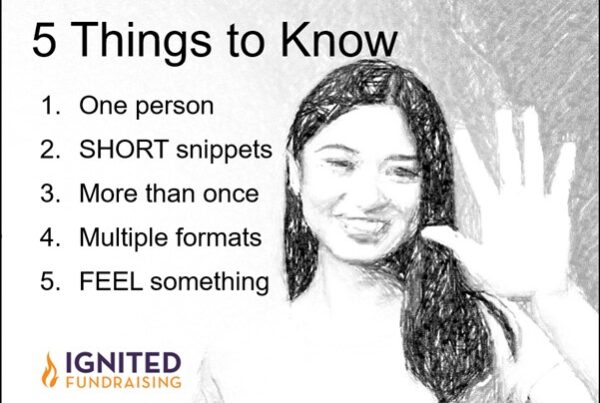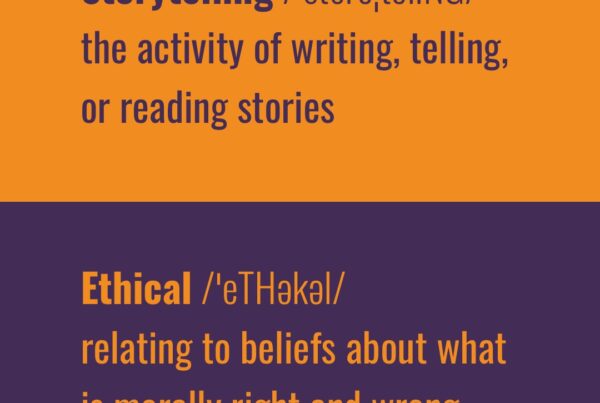Here is the last of the three questions I get asked regularly about how to share stories. You can see the answers to the first two questions here. This is an excerpt from Q & A portion of the free webinar I recently delivered for Bloomerang.co.
Q3. Catherine asks: “As an international organization, a staff who would be organizing and dispersing the stories are thousands of miles away from our beneficiaries.”

LJ: I love this question. I get asked this a lot. How do we share the stories that happen so far away?
First: You’ll need to do a little training with your on-the-ground staff:
a) Give them some questions to help them gather these powerful stories.
The questions to ask are, how do you feel today when you come to the school or the whatever it is? Why do you like coming here? How do you feel when you go home at night? Or how did you feel before you came here? You want to ask how they feel, you don’t want to ask them to tell you a story. And what do you feel for the future of your country or your community? What are the feeling words that you’re listening for?
You want to be listening for words that are descriptive, visual, words that have me feel some empathy. It might be I feel so isolated or I feel ashamed or now I feel proud and I feel safe for the first time. So you ask how people feel. That will make a big difference in the kind of feedback you get from people you’re talking to.
b) How does your on-the-ground staff capture those words and stories?
Many, many of us have a smartphone and what is the one thing that these smartphones have because they’re so darn smart? They have a camera.
I actually prefer you DON’T have high quality videos when you’re talking to the people you serve. I love to have their story shared on the phone camera in front of them.
Second: How do we get access to that video recorded by our staff in another country? That smartphone video, you can put it in Dropbox and someone else can view it in about three minutes.
I like to have organizations that do international work, have a regular updates from the field and they can be someone who is gone to visit one of those villages or one of those people or they can be the workers that are on the ground.
But you have regular updates just like you have an e-newsletter that hopefully that comes out on a monthly basis. In your updates you want me to have a mission moment connection.
I like a video that’s about a mission moment to be less than two minutes. So a minute, a minute and a half and you can edit some pieces together if you want to. But I’m not hi-tech. I just take that little snippet of that quick question I asked of how they feel and maybe in an email I might say, “You made this happen. Here is an update on what you made happen yesterday.”
Third: The tricky problem has to do with language and cultural barriers.
Many times your beneficiaries modestly downplay the hardships they’ve been through. It’s our job to play up and tell the background. But it’s their job to tell how they feel now, today.
So let me give you an example. I used to work with an organization and they would take us on a tour of the school and they would ask us to count the number of books in the school classroom and to notice where the crayons were.
And so we would count the books as we went in and would notice there were three books and there were 30 children. We asked to see the crayons and the teacher would pull out the tin, you know the Altoids tins? That’s where the crayons were and if the teacher had the tin that meant, that teacher was the lucky teacher because they had one tin between two classrooms.
It’s our job as staff and as volunteers and board members to tell the background and get me ready to see what is different because YOU are there.





